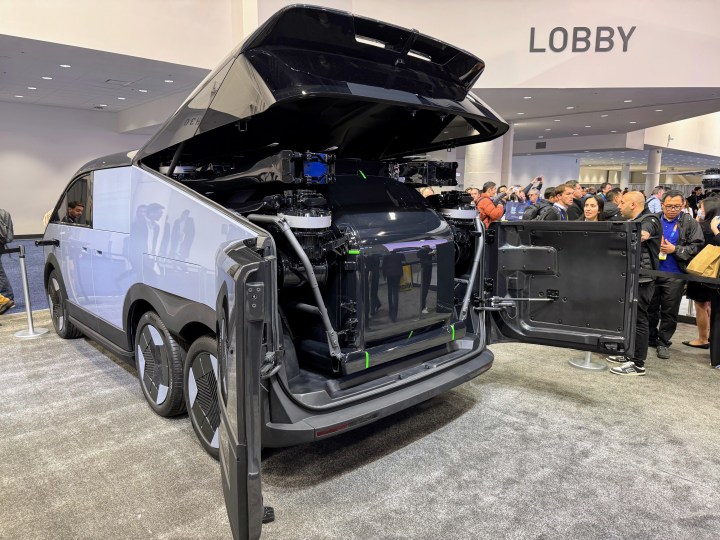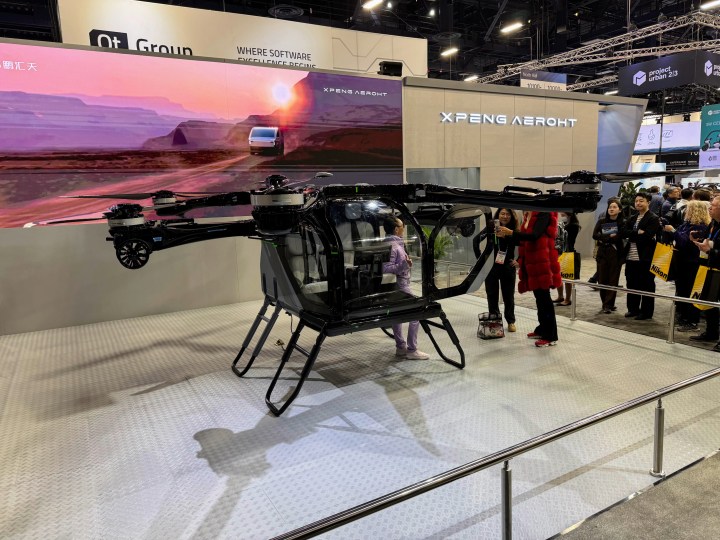
The battle for the title of most extravagant vehicle at CES is undeniably fierce. From the sleek, solar-powered Aptera and the electrifying Lightspeed RVs to an array of personal electric transport options, the competition is tough. However, Xpeng, a leading Chinese electric vehicle manufacturer, stole the spotlight this year with its impressive Aero HT Land Aircraft Carrier (LAC), a colossal vehicle that truly lives up to its name.
When the rear hatch opens, the massive LAC reveals its unusual cargo: a drone, which is essentially an electric vertical takeoff and landing aircraft (eVTOL). As it unfolds from the back, the drone’s legs lower down reminiscent of a newborn’s first steps, while the van itself rises and falls to assist in the extraction through its air suspension system.

While the extraction process may lack elegance, the reveal of a shiny, six-rotor drone ready for takeoff is nothing short of impressive. Dubbed the “air module,” Xpeng claims that this craft is user-friendly enough for anyone to master in just five minutes thanks to its single-stick control system. The drone is also designed for autonomous flight, and according to Xpeng, it features redundant systems, allowing it to stay aloft safely even if up to two rotors malfunction. However, there’s no information about a parachute system, which is a feature found in other eVTOLs.
Who is likely to utilize such innovative technology? Xpeng imagines adventurous families traveling to picturesque destinations, deploying the module for exploration at lower altitudes. The company plans to establish “flying camps” along scenic routes to support these launches. Essentially, this entire system is engineered for versatile deployment: all six wheels provide off-road capabilities, and the air suspension automatically adjusts to stabilize the air module on uneven terrain. After a flight, the van can retrieve the drone at the touch of a button, using sensors to back up smartly and store it again.

Both the air module and the ground vehicle operate using 800V batteries, similar to those found in renowned EVs like the Ioniq 5 and Porsche Taycan. The van incorporates a generator to recharge its batteries as well as those of the aircraft, with claims that it can achieve up to six flights on a single fuel tank.
If this sounds like something out of a science fiction novel, you’re not alone in your skepticism. However, Xpeng showcased the entire setup during the China International Airshow last November. At CES 2025, visitors could view the air module cockpit and take in the 270-degree field of vision firsthand.

Xpeng reveals that the LAC is expected to be completed by the third quarter of 2025, with deliveries commencing in 2026. However, pricing information remains undisclosed.






